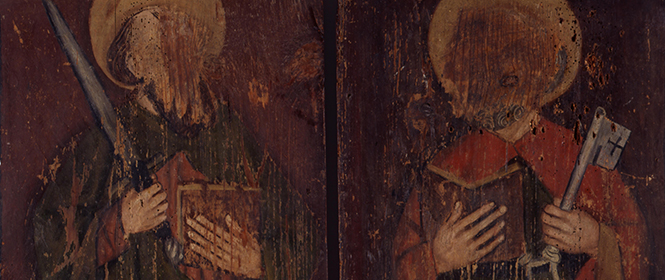
Iconoclasm and Reformation
Christianity has experienced periods of iconoclasm – the religiously motivated destruction of works of art, especially figurative images: for example the Byzantine Iconoclasm of the 8th and 9th centuries, and what Martin Luther termed the “Bildersturm” (picture storm) during the Reformation, whose 500th anniversary is celebrated this year.
The Bible’s rejection of the worship of images
The basis for the deliberate destruction of pictures and sculptures in Christian churches at the time of the Reformation was the idea that to make and use images for Christian worship was contrary to the word of the Bible; in particular, the second of the Ten Commandments: “Thou shalt not make unto thee any graven image, or any likeness of any thing that is in heaven above, or that is in the earth beneath, or that is in the water under the earth: Thou shalt not bow down thyself to them, nor serve them” (Exodus 20:4-5). The Second Commandment is directed against idolatry and is what lies behind both Christian hostility towards images and the Judaic and Islamic rejection of image worship.
Those Reformers who spoke out against the use of images in Christian churches generally went on to support their argument with a second Bible passage, taken from the New Testament: the story of the rich young man. Jesus advises the young man that if he wants to do good, he should keep the commandments, and if he wants to be perfect, he should sell his possessions and give everything to the poor. The passage ends with the famous saying that it is easier for a camel to pass through the eye of a needle than for a rich man to enter Heaven (Matthew 19:16-26; the story is also found in Mark 10:17-27 and Luke 18:18-27). The Reformers used this story as justification for attacking various abuses of the late mediaeval church.
Late mediaeval piety and the cult of saints
By the late Middle Ages, the cult of saints had indeed assumed forms which came very close to idolatry. Sculptures of saints were worshipped like gods and people prayed to them for help with specific difficulties in their lives. Instead of making donations to a church in the name of a saint, they would often give money specifically to a painting or sculpture of the saint in question. The cult of saints, as embodied in the religion of ordinary people, thus conflicted with the Second Commandment. Moreover, doing “good works” now often meant not only giving alms to the poor, but also making donations of money to churches and saints. It was this practise which Luther attacked when he argued that “good works” would not open the gates to Paradise, but faith alone – an argument which was also important in his censure of the trade in indulgences.
Reformation iconoclasm
Martin Luther certainly rejected the cult of saints, but he did not see pictures and statues as dangerous in themselves. After some initial disturbances, therefore, including some in Wittenberg, Lutheran regions seldom suffered from iconoclasm. Other Reformers, however, such as Zwingli and Calvin, not only rejected the creation and use of images for worship, but saw them as a distraction. In regions under their influence, therefore, the pictures and sculptures which had filled the mediaeval churches were removed. In some places this was done in an orderly fashion, the images being withdrawn from worship without being destroyed, but elsewhere they were thrown on to bonfires or smashed to pieces while still inside the churches. An engraving in the permanent collection depicts one such incident. Men with cudgels stand guard outside the church, while inside others are using ropes to pull the statue of a saint from its pillar, smashing stone figures and glass windows, removing pictures from the walls and taking an axe to an altarpiece. On the right of the picture we see people eagerly making off with sacks and baskets full of booty, or simply filling their aprons with it. These iconoclasts were Calvinists and the incident took place on 20 August 1566 in the Onze-Lieve-Vrouwekathedraal (Cathedral of Our Lady) in Antwerp.
Numerous churches and monasteries in Switzerland, Germany, France and the Netherlands were plundered like this and emptied of their once-revered art treasures through theft or destruction. In many cases images were formally condemned and publicly burned on bonfires, or mutilated by having their hands and heads knocked off or their faces smashed. On the outer panels of two altarpiece wings in the museum’s collection, one of which is in the special exhibition and the other in the permanent exhibition, there are paintings of two saints whose faces have been obliterated. St Peter can still be identified by the keys in his hand and St Paul by his sword and bible. In fact, if figures held bibles in their hands, these were often spared, since the Word of God held special significance for the Reformers.